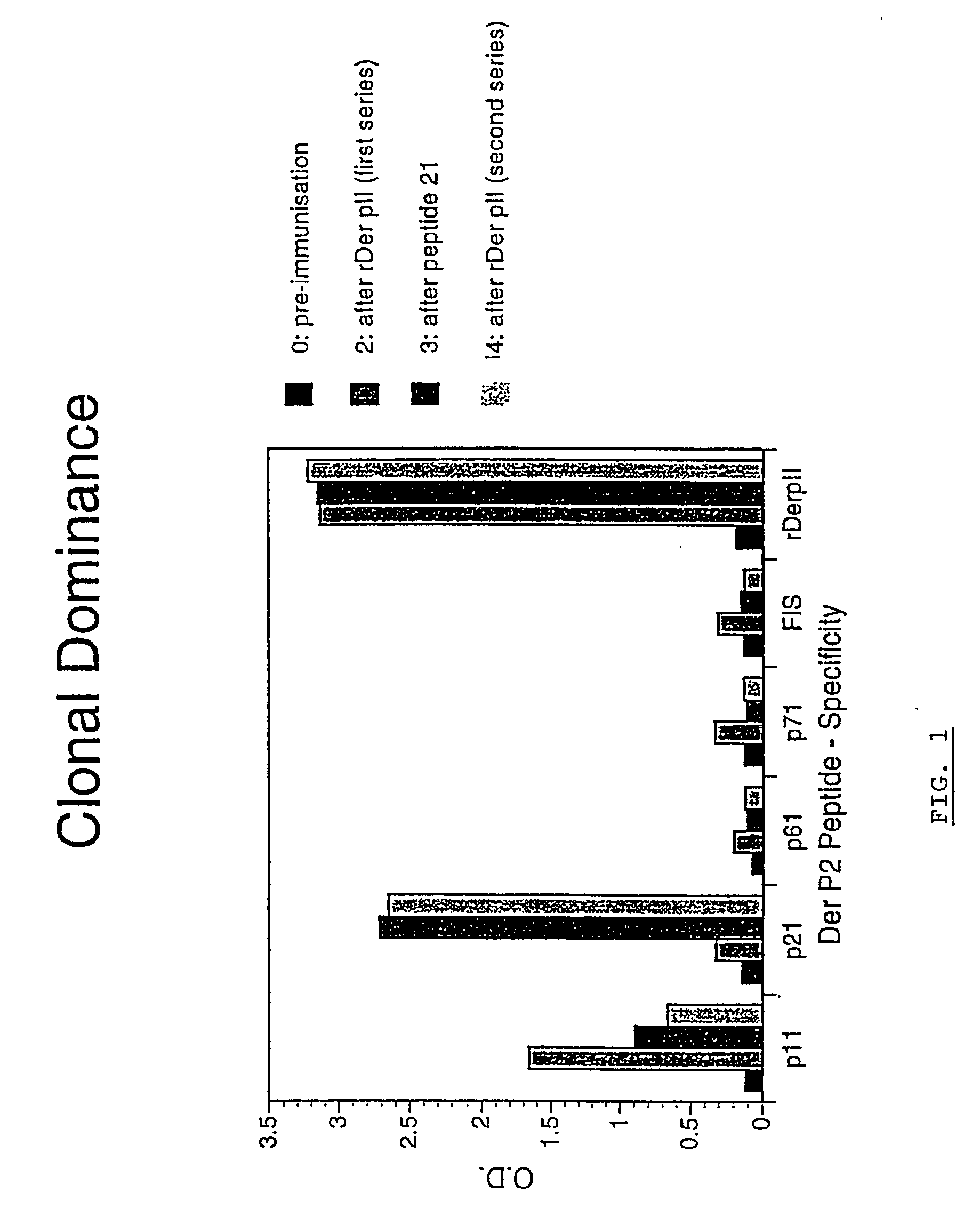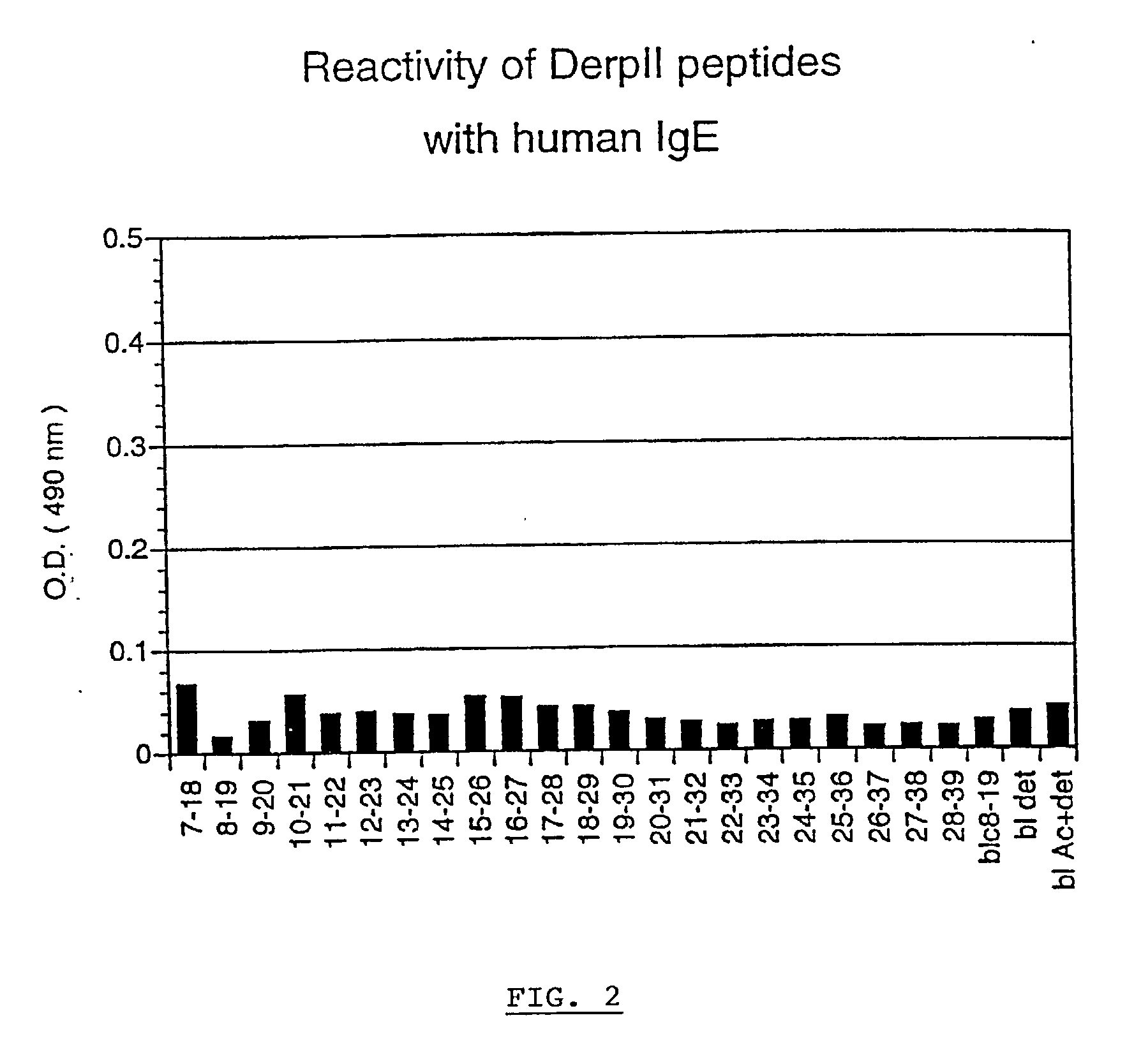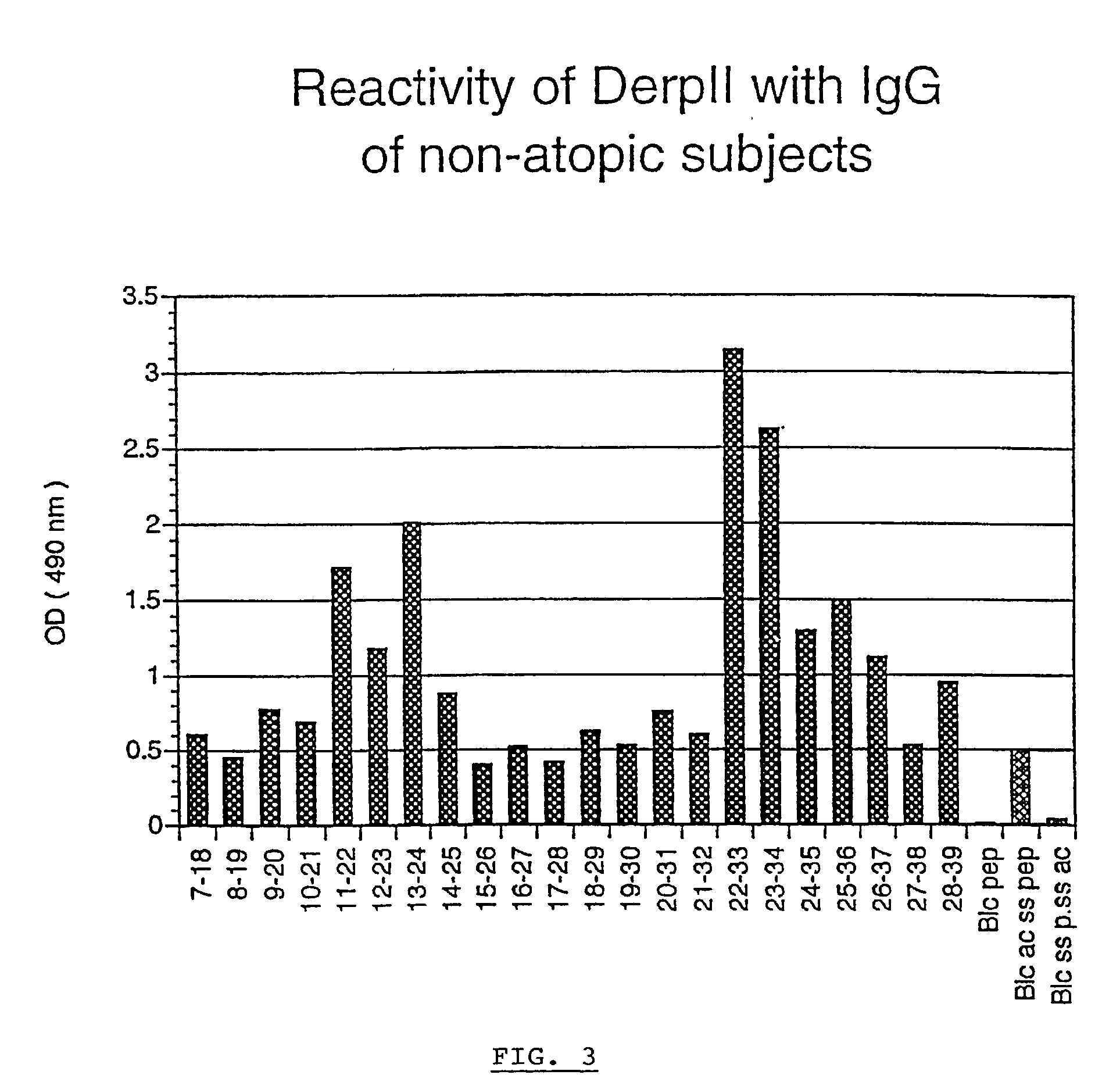Compound and method for the prevention and/or the treatment of allergy
a technology for allergy and compound, applied in the field of compound and method for allergy prevention and/or treatment, can solve the problems of restricting the number of antibody molecules, restricting the access of spontaneously made antibodies, and patients' restrictions
- Summary
- Abstract
- Description
- Claims
- Application Information
AI Technical Summary
Benefits of technology
Problems solved by technology
Method used
Image
Examples
example 1
[0092] A 31 amino-acid peptide made of 15 AA representative of a T cell epitope of tetanus toxoid (amino acids 830 to 844 of the heavy chain) and 14 AA containing a B cell epitope of Der pII, the two epitopes being separated by a stretch of two glycine residues, is obtained by synthesis. The sequence is SEQ ID NO 1 QYIKANSKFIGITELGGHEIKKVLVPGCHGS.
[0093] Characteristics of the Peptide
[0094] 1. The B Cell Epitope is not Recognised by IgE Antibodies
[0095] The peptide is not recognised by IgE antibodies made by individuals sensitive to the native protein. This is established by an immunoassay carried out as follows. The peptide is insolubilised on polystyrene microtitration plates and a panel of serum samples of atopic individuals sensitive to Der pII is added; the binding of specific IgE antibodies is detected by addition of an isotype-specific reagent.
[0096] Thus, a peptide (SEQ ID NO. 2) of the sequence HEIKKVLVPGCHGS corresponding to aminoacids 11-24 of Der pII is obtained with soli...
example 2
[0106] The compound of the invention can be prepared by recombinant cDNA technology to produce a polypeptide made of a series of repetitive units of T and B cell epitope-containing peptides. A polypeptide made of a duplicated T cell epitope derived from TT (amino acids 830 to 844 of the heavy chain) and six repetitive B cell epitopes derived from Der pII is produced by DNA technology. A sequence of two amino acid residues is inserted in between each epitope. The sequence is: D-(QYIKANSKFIGITELX).sub.2-(CHGSEPCIIHRGKPFX).sub.5-CHGSEPCIIHRGKPFSR, in which X is GG or SS.
[0107] Such polypeptide is obtained as follows. The nucleotide sequence of the TT epitope corresponding to QYIKANSKFIGITEL (SEQ ID NO. 13) and of the Der pII epitope: 21-35 corresponding to CHGSEPCIIHRGKPF (SEQ ID. NO. 14) are deduced. A theoretical assembly is made from nucleotides corresponding to, on the one hand, the sequence TT epitope--GG--TT epitope (T subunit) and, on the other hand, two copies of the Der pII ep...
example 3
[0115] The nucleotide sequence coding for compound of the invention can be used for direct gene immunization. This DNA-based vaccine can be administrated by different routes (i.e. intramuscular, intradermal, subcutaneous, oral) using "naked" DNA, encapsulated DNA or DNA in the form of micro- or nanoparticles such as chitosan (K. Roy et al, Nature Medicine 1999; 5: 387-391).
[0116] A nucleotide construction made as in Example 2 but containing the DNA sequence coding for one T cell epitope derived from TT and 2 B cell epitopes derived from Der pII, each epitope being separated by the sequence GGAGGT or GGCGGT coding for 2 glycine residues, is used, for direct immunization by intramuscular injection. The nucleotide sequence is flanked in 5' by a sequence containing an EcoRI restriction site and a KOZAK sequence (i.e. GAATTCCCACCATGG (SEQ ID NO. 16)) and in 3' by a stop codon and a NotI restriction site (i.e. TAGGCGGCCGC (SEQ ID NO. 17)), and inserted into a suitable vector.
[0117] The se...
PUM
| Property | Measurement | Unit |
|---|---|---|
| Fraction | aaaaa | aaaaa |
| Fraction | aaaaa | aaaaa |
| Fraction | aaaaa | aaaaa |
Abstract
Description
Claims
Application Information
 Login to View More
Login to View More - R&D
- Intellectual Property
- Life Sciences
- Materials
- Tech Scout
- Unparalleled Data Quality
- Higher Quality Content
- 60% Fewer Hallucinations
Browse by: Latest US Patents, China's latest patents, Technical Efficacy Thesaurus, Application Domain, Technology Topic, Popular Technical Reports.
© 2025 PatSnap. All rights reserved.Legal|Privacy policy|Modern Slavery Act Transparency Statement|Sitemap|About US| Contact US: help@patsnap.com



